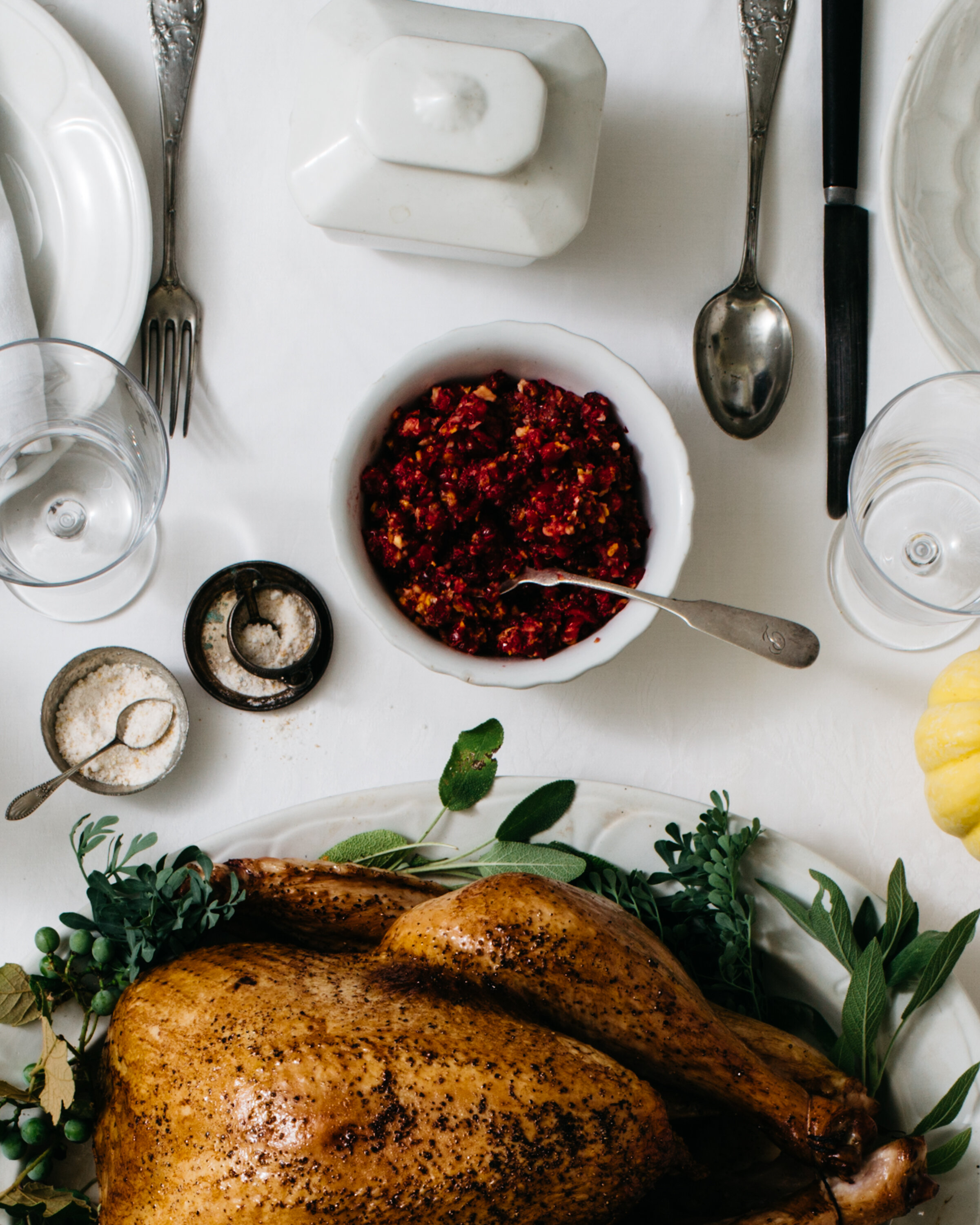Sweep The Kitchen Twice
Photo by Michael Piazza / Styled by Catrine Kelty
Food waste is a big problem. According to research done by the Food and Agriculture Organization of the United Nations, more than 20 pounds of perfectly edible food per person is wasted every month in North America alone, while at the same time over 800 million people in the world go hungry. And the otherwise edible food waste that gets dumped into U.S. landfills—rather than onto plates or even into compost bins—is a main source of dangerous methane emissions.
Local companies like Save That Stuff and Lovin’ Spoonfuls are doing their part by creating institutional composting and food donation programs, and many local cities and towns—including Cambridge, Ipswich and Salem—have started their own curbside compost pickup programs. But what more can we, as concerned citizens, do about it? Can we pledge to eat this food instead of discarding it? Just as important as the work done by nonprofits and food waste organizations to save food from the landfills are the steps we can all take to reduce waste in our own kitchens.
The solution starts at home.
Learn to cook with what you have instead of buying something new to fit a recipe. The more you can adapt to what’s on hand in your fridge or pantry, the better cook you’ll become. Think of it like a nightly episode of “Chopped” in your own kitchen! If your recipe calls for green lentils, but all you have are red ones, experiment with what you’ve got. Or if you have a favorite marinade for pork chops, but you already have chicken breasts in the freezer, give the sauce a whirl on a different type of meat. It’s always surprising how adaptable recipes can be to new ingredients.
Work to reuse and re-create leftovers into something new and exciting. If you have a few stale tortillas and beans left over from a taco night, make chilaquiles for a hearty and satisfying breakfast: Fry strips of tortilla in oil, add the beans, then stir in a couple of beaten eggs and a scattering of chopped scallions. Or turn a sad container of cold rice into a second meal by adding sautéed onions, some bits of leftover meat, fish or veggies, and give it a toss in some sesame oil and soy sauce in a blazing skillet—you’ve got easy homemade fried rice. My favorite transformation? Shredding the remains of a pot roast or pork shoulder, or even some grilled sausages, into a simmering tomato sauce and calling it ragù. With a long, slow cook and hefty dose of garlic, nothing tastes better over pasta—or polenta, if we’re out.
Transform your ingredients to preserve them before they go bad to save food and save money. A costly pint of local berries or basket of pears that no longer look pristine can be washed and frozen, ready for a smoothie or a wintertime fruit crumble. When the crisper drawer is full of wilted greens and softened roots—once vibrant and lush and irresistible at the farmers market—it’s time to chop them up and make soup. A stale baguette or other artisan bread can be left out and dried, then crushed in the food processor for breadcrumbs— freeze in zip-top bags and you’re minutes away from breaded chicken breasts, fish filets or pork cutlets. Use your freezer to save food from the depths of the refrigerator, and extend the life of the beautiful local fruits and vegetables you’ve spent your hard-earned money on.
Save Sundays for “Sweep The Kitchen Twice.”
Cribbed from my husband’s mother, this term is one of my favorite family sayings. Before heading to the store for yet another load of groceries, we do a sweep of all the odds and ends from meals earlier in the week, set it out buffet-style, and have it all for dinner. It’s always better than it sounds, and sometimes the varying flavors mingled on your plate are surprising and delicious—think pickled beet salad up against Asian bok choy with rice noodles, or a bit of curried chicken nestled alongside a chunk of reheated flank steak. These dishes may not have gone together to begin with, but a plate full of morsels from the prior week’s meals is like the potluck supper of our dreams.
Start by using up or transforming your holiday leftovers, and make it a habit to continue throughout the year. Post-Thanksgiving and other holidays are when we have the most excess food to use up. I always make way too much food, even when I have a crowd to feed, so I’ve created a few standby dishes to transform our abundant leftovers.
By the time the holiday weekend rolls around, we’re tired of reheated bits and bobs from the big meal, so we move on to cranberry-orange pound cake (made from my raw cranberry relish), turkey-and-potato croquettes with saffron aioli (perfect served on the sofa in front of the football game), and puréed carrot soup (made from a main-event dish of roasted heirloom carrots that my husband loves more than any other orange vegetable—so it’s a staple on my menu every year). Give these recipes a try for—and after—your holiday meal, and be sure to save your turkey carcass for soup!
This story appeared in the Fall 2016 issue.






